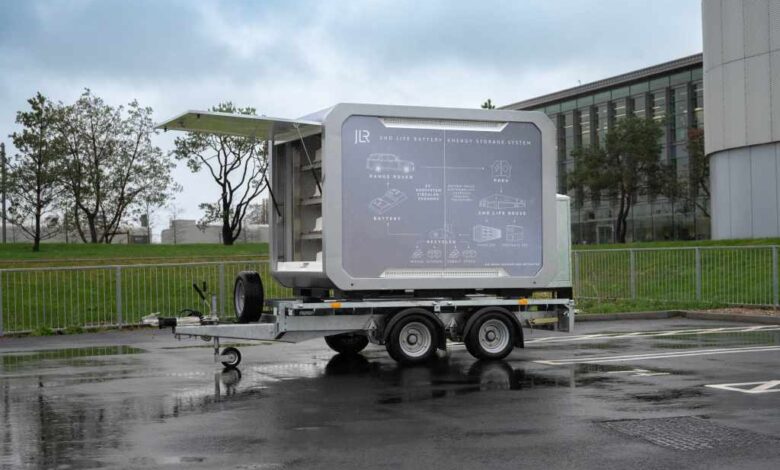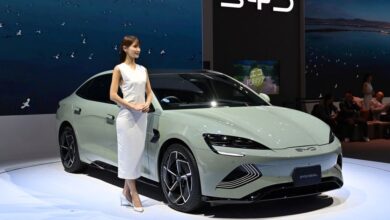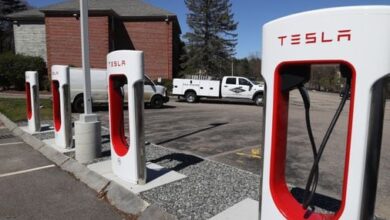Portable battery storage system made from second-hand electric Range Rover batteries

British automaker Jaguar Land Rover has unveiled a new portable battery energy storage system that is made from second-life Range Rover and Range Rover Sport PHEV batteries.
JLR, as the company has been known since 2023, partnered with energy storage start-up Allye Energy to create the Allye Max battery energy storage system (BESS) which contains seven second-life Range Rover battery packs.
Each Allye Max BESS can store 270kWh of energy at full capacity and needs no additional processing to incorporate the seven Range Rover battery packs – meaning they can be taken straight from the car and slotted into the customised racks.
Weighing 3.5 tonnes, the Allye Max BESS is capable of being fully portable or stationary, and will be used to provide energy storage for retailers or JLR sites – helping the company’s network of retailers better make use of renewable energy sources like solar.
While there are hopefully more use cases on offer, JLR says each BESS is capable of charging up to nine Range Rover PHEVs at any one time while also being easily charged by plugging it into any CCS-capable vehicle charger using the same input as JLR’s existing PHEV and BEV product portfolio.
Multi-input connectivity made available by powerlock connections also enables the BESS to connect to renewable power at fixed or off-grid sites, meaning that it could be used to replace diesel generators used in various off-grid situations
JLR is looking to use the new battery systems to power off-grid vehicle launches, events, and vehicle testing in remote areas.
“Developing second-life battery projects like this is crucial if we want to make sustainability real in JLR and drive us towards achieving our carbon net zero target by 2039,” said Reuben Chorley, sustainable industrial operations director at JLR.
Joshua S. Hill is a Melbourne-based journalist who has been writing about climate change, clean technology, and electric vehicles for over 15 years. He has been reporting on electric vehicles and clean technologies for Renew Economy and The Driven since 2012. His preferred mode of transport is his feet.


